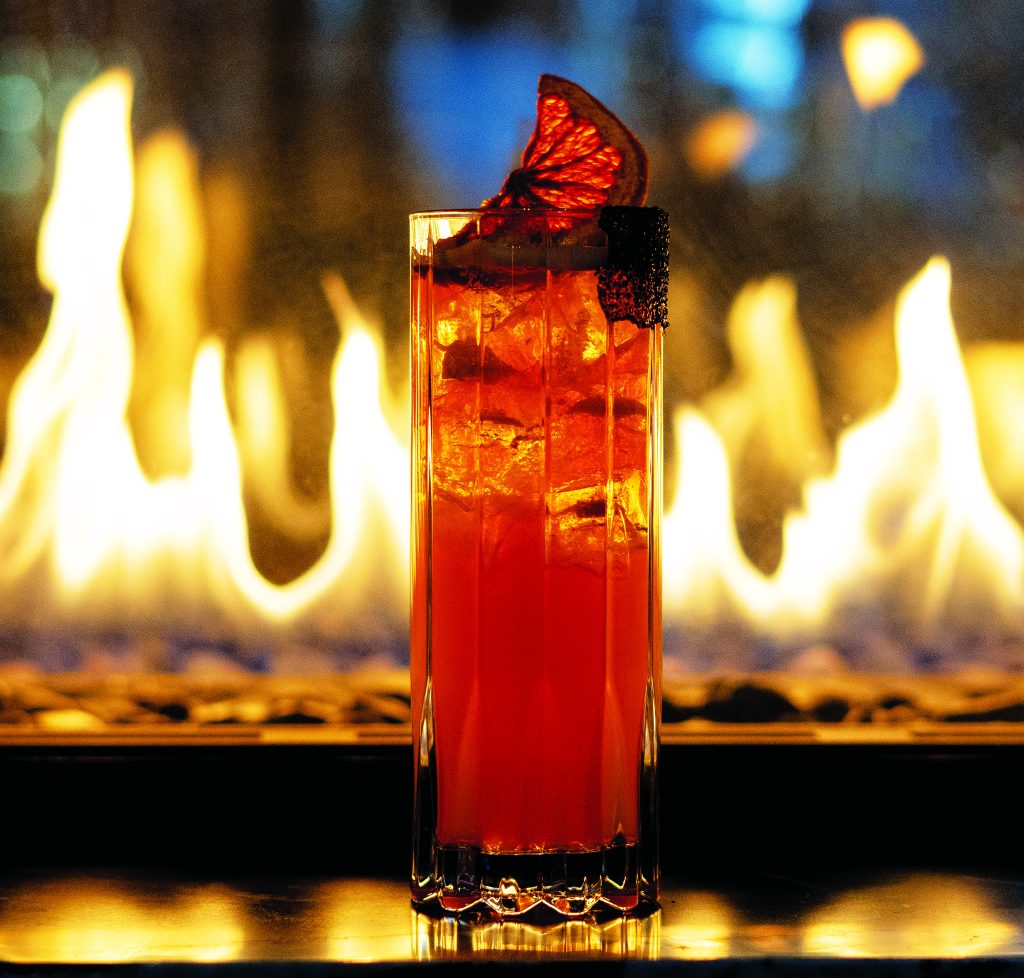Tequila’s siren call: From plant to paloma, there’s more to savor than just a shot
EAT Magazine

Dominique Taylor/EAT Magazine
I’ll admit it: I have politely turned down offers of tequila for one reason — it made me cry. Truly, it seemed every time I indulged, I ended up in tears (and not the good kind).
However, in the past few years, I’ve realized one very important truth: All tequila is not the same; aswith many things, quality matters.
I’m not alone in this revelation. Tequila has come a long way from its party-shot reputation.
“If Jose Cuervo Gold is the only tequila you’ve ever had, you’re not drinking tequila,” says Ron Girotti, general manager of El Segundo in Vail. “You’ve definitely missed the boat because there’s so many good flavors and I feel like that kind of gives people a bad taste. A lot of people will be like, oh, I don’t drink tequila because I had that 20 years ago.”
Girotti credits Patrón Tequila with creating a more palatable tequila that brought consumers out of their comfort zone and into the world of tequila.

Support Local Journalism
Now, imbibers have access to a wide range of tequila expressions from small-batch, family- run distilleries to operations that are crafting award-winning spirits. Tequila has a rich history, a complex production process and several diverse styles as varied as fine wine or whiskey. Instead of shots, more people are stepping into the world of sipping tequilas and “flight” experiences to discover the nuances of this Mexican spirit.
“Don’t be afraid to try some new things and to experiment because there’s a lot of really good stuff out there and a lot of good smaller brands,” Girotti says. “And nothing really tastes like the Jose Cuervo Gold. That almost doesn’t even count as tequila in this world anymore.”

Whether you’re looking for a sipping experience or the perfect base for a cocktail, a brief tutorial on how tequila is made and the differences between styles will not only elevate your next tequila experience but might also avoid tears or other potential pitfalls.
From the beginning…
Tequila is a distilled spirit made from the blue agave plant, specifically “agave tequilana,” which thrives in the volcanic soils of Mexico’s Jalisco region. The process starts with jimadors harvesting mature agave plants, usually after seven to 10 years of growth. The heart of the agave, known as the “piña,” is extracted and baked, traditionally in ovens, to convert its starches into fermentable sugars.
Once baked, the piñas are crushed to release their sweet juice called “aguamiel.” Traditionally, this was done with a tahona, a heavy stone wheel pulled by a donkey; though most distilleries have gone modern, some are bringing back this technique. The juice is fermented using yeast which converts the sugars into alcohol; it’s then distilled twice to produce a clear, high-proof spirit. Some tequilas are bottled immediately, while others are aged in oak barrels (or other vessels) to develop different flavors and characteristics.
Select your style
There are five main types of tequila, each with its own profile and aging process:
Blanco (or Silver) – Often considered the purest expression of agave, blanco tequila is unaged or aged for less than two months. It’s a clean and crisp spirit with vegetal and peppery notes, making it an excellent choice for cocktails like margaritas,palomas, ranch water and more.
Reposado — Reposado means “rested” and refers to tequila aged for at least two months — but less than a year — in oak barrels. By keeping the aging to a minimum, the agave flavor remains fresh but the oak imbues notes of vanilla, caramel and a slight smokiness.
Girotti notes that reposados are a great middle-ground for newcomers to the world of sipping tequila.
Añejo — Aged for one to three years, añejo tequilas have deeper, richer flavors of oak, chocolate and spice, much like whiskey. They’re perfect for sipping neat or on the rocks or creating a twist on classics like a Manhattan or an Old Fashioned.
Extra Añejo — This category includes tequila aged for more than three years. These tequilas are often compared to high-end cognacs or bourbons with rich, smoky flavors and a velvety texture.
Cristalino — A newer style that is technically an añejo or extra añejo but has been filtered to remove the color picked up from the oak barrels. The result is a clear tequila with the complex flavor of an aged spirit but the appearance of a blanco.
Create your cocktail
For cocktails, blanco tequilas are the go-to option. Their bright, vegetal flavors hold up well when mixed with citrus and other ingredients, making them ideal for classics like margaritas and tequila sunrises. You want to look for a blanco that is smooth and crisp, but with enough agave character to shine through in a mixed drink.
Some cocktail enthusiasts prefer using a reposado for a richer flavor. The slight barrel aging adds a layer of complexity that can complement the other elements in the drink without overpowering them. However, extra añejos or heavily aged tequilas are usually wasted in a cocktail — like whiskey or bourbon, they’re meant to be enjoyed neat or with a splash of water to open up the flavors.
Steve Beckman, bar manager at Tavern on the Square in Lionshead, has convinced customers to create their favorite whiskey cocktail with tequila; he also makes a killer tequila dessert cocktail. He’s quick to extol the spirit’s virtues, including the fact that it’s a probiotic (contrary to popular belief, it’s not a stimulant — it’s actually a depressant like all other alcoholic spirits). But he waxes most poetic on the margarita.
Tavern’s Mountain High Margarita has been a bestseller for years. Created from Espolon Reposado, house sour mix, lime, salt and a floater of Grand Marnier, this quintessential tequila classic keeps folks coming back. Beckman credits the popularity with good tequila — of course — and the purity of the house made sour mix. They make three and a half gallons at a time; sometimes they’re making it daily.
“It’s the best margarita in town,” Beckman boasts.
Start with a sip…or a tasting experience.
Speaking of neat: When looking for a tequila to sip, you want to prioritize flavor complexity and smoothness. High-quality tequilas will be made from 100% blue agave, without additives like sugar or flavoring agents. A good reposado or añejo is often the best place to start for sipping, offering a balance between the raw agave flavors of a blanco and the deeper, aged characteristics of an añejo.
According to Girotti, one brand worth exploring is Osadia, particularly their reposado finished in burgundy barrels, which delivers unique chocolate-covered cherry notes. This expression demonstrates how aging and barrel choices can create complex and surprising flavor profiles in tequila. For whisky aficionados, Casa Dragones recently released Reposado Mizunara, the first tequila rested exclusively in new Mizunara casks, a rare oak native to Japan traditionally used for aging Japanese whiskies. This tequila balances the minerality of agave with the light notes of Japanese oak for a refined, elegant sweetness, according to the product description.
The best way to find what you like is to try a few and Girotti is happy to take customers on a journey.
“The first question I usually ask is, what do you usually like; what’s your usual flavor profile?” Giotti says. “If they say they usually like reposados, I’ll tell them about a few reposados they might not know about. You have to feel out the customer and just kind of see where they’re at then take them on that track. I just try and get people slightly out of their comfort zone a little bit.”
Mezcal: tequila’s cousin
For those who like smoky, mezcal is often offered. However, though both tequila and mezcal are made from agave, they are not the same: They differ in production methods, flavor and regulations.
The most significant difference between tequila and mezcal is in the way the agave is cooked. For mezcal, the piñas are roasted in underground pits lined with stones, giving the spirit its signature smoky flavor. Tequila, on the other hand, typically steams the piñas in ovens, resulting in a cleaner taste. As Girotti points out, mezcal’s earthy, smoky notes can be much more intense than tequila, making it an acquired taste.
Mezcal is also made from a variety of agave species, not just blue agave. This can result in a broader spectrum of flavors, depending on the agave used and the region it’s grown in.
For those new to mezcal, the smoky profile might be overwhelming at first. However, the complexities of mezcal can be even more intriguing than tequila for those ready to travel that path. Mezcal is also popular in cocktails like the Oaxacan Old Fashioned or mezcal margaritas.
A whole new world
Whether you’re a tequila newcomer or an aficionado, the current explosion of high-quality options means there’s always something new to discover. From the clean, fresh flavors of a good blanco to the rich, smoky depths of an extra añejo or mezcal, tequila provides a brave new world for newbies — and veteran tequila lovers — to explore. Or, if you’re feeling adventurous, try something a bit wild…like the tequila offered up from an unidentified horn at Tu Casa.
For me, I’m enjoying the opportunity to explore a new world of craft and tradition. Currently, I’m sipping a Casa Dragones añejo — the rich, buttery smooth taste reminds me of a lighter version of my beloved whiskey — with no tears involved









